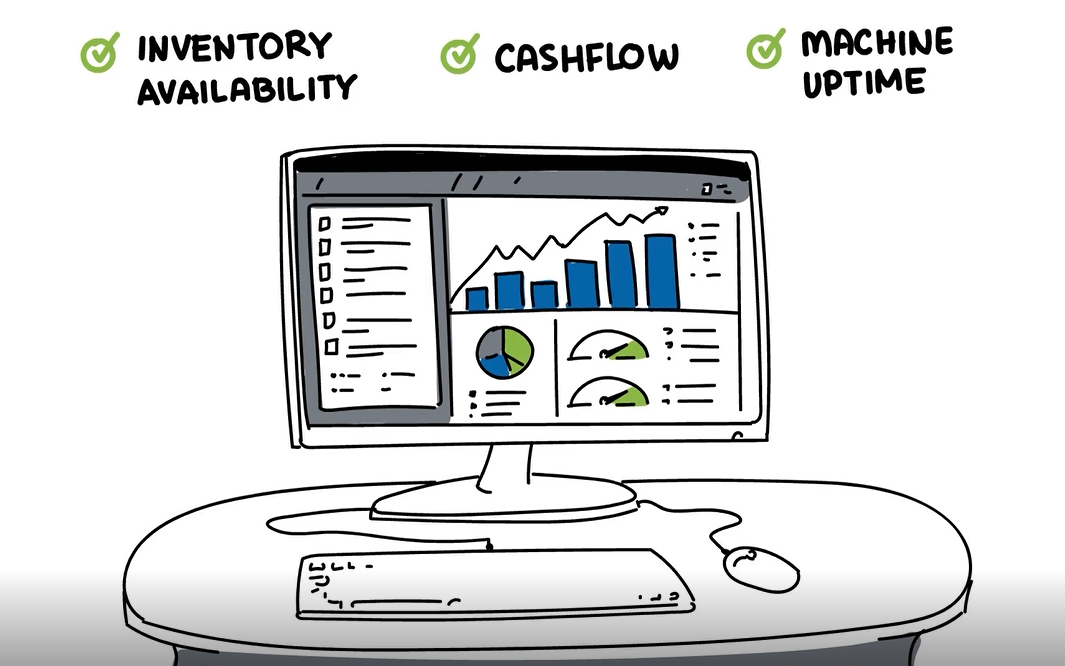MRO Health Check
There’s untapped potential to improve your parts inventory and MRO supply chain – and we can help you quantify it. The MRO Health Check provides a cost-friendly deep analysis of your transactional data and current practices to uncover MRO inventory optimization opportunities, with 3 key deliverables:
- A data-driven view and gap analysis on the health of your MRO supply chain
Features an inventory profile (moving, slow-moving, non-moving), plus lead-time, min/max and replenishment analysis - A detailed business case and recommendations for change, supported by clear data
Provides an inventory optimization opportunity assessment, as well as fact-based answers to senior management’s questions - A plan for where, how and how much you can improve your MRO supply chain
Delivers actionable insights across functions, with prioritized recommendations for improvements and their measurable impacts
Ready to Get Started? Contact Us.
How It Works
Based on up to 5 years of your transactional data, the MRO Health Check provides in-depth analysis to identify where supply chain improvements can be made. Requiring limited time from your team, it is conducted virtually and takes just 3 to 5 weeks depending on available data.
1. EXTRACT
2. BUILD
The custom data model is built and validated
3. ANALYZE
Deep analysis is conducted to identify opportunities, issues and trends across functions
4. REPORT
A written report and business case are generated and findings are presented to your stakeholders

Key Benefits At-a-Glance
- Understand how your MRO supply chain is performing and discover ways to improve it
- Increase reliability, drive operational efficiencies and reallocate working capital
- Provide fact-based answers to questions on downtime and asset availability
- Identify how your MRO supply chain can be leveraged for competitive advantage
The MRO Health Check analysis was the important first step in implementing a successful Supply Chain improvement program. It gave us the confidence to execute on the plan. Inventory Control Specialist
Download a Sample Health Check Report
Our Platform

Proven, cloud-based decision support software for MRO parts inventory management and optimization.
- Based on prescriptive analytics, ML algorithms, business rules and years of human experience
- Leverages data from your ERP/EAM to expose issues, trends and insights
- Optimizes parts replenishment through ordering and lead-time recommendations
- Provides productivity tools, standard and user-built reporting and KPI visualizations

The Xtivity Advantage: Rapid Implementation and Time to Value
We achieved lightning-fast ROI with Xtivity. – Inventory Management Specialist
MRO Health Check FAQs
We run 3-5 years of your transactional data through our Pulse Inventory Optimization Software, conducting deep analysis to identify opportunities, issues and trends. We then provide you with a clear, written analysis and recommendations for change, supported by the data needed to drive your business case.
The key deliverables/insights provided via the MRO Health Check include:
Inventory Profile (moving, slow-moving, non-moving)
Lead-time Analysis
Min/Max Analysis
Replenishment Analysis
Detailed Business Case
Prioritized Plan with Actionable Insights
In addition to the above deliverables, our clients see measurable improvements in their supply chain resilience, asset reliability, operational efficiency and cashflow.
Sure! Contact us to request a sample Health Check or have a live discussion.
The primary data driving MRO inventory lives in your ERP or EAM system. Whether you use SAP, IBM Maximo, JDE, MS Dynamics or other systems, Xtivity’s Pulse platform leverages that transactional data, and more, to deliver optimized parts management and expose valuable insights.
Fitting easily into most budgets, there are two Health Check options, Standard and Premium:
STANDARD MRO HEALTH CHECK: $14.5K USD
We dig deep into your MRO inventory. We analyze your inventory profile, opportunities for order value changes, identify new addition rates, highlight potential obsolescence, etc. We also identify outcomes, such as cashflow relief by decreasing excess inventory, increasing inventory to meet service levels, reducing purchasing workload and much more.
What does the Standard MRO Health Check include?
Inventory Management
Inventory profile (#/% moving, slow-moving & non-moving)
Percent of items with recommended ordering value changes
Rate at which new items are being added
Potential obsolescence highlighted
The associated business impact of acting on the above recommendations and a timeline for achieving benefits. Examples would include:
o Areas to increase inventory holdings
o Areas to reduce excess inventory
o Overall expected net change in holdings and free cashflow
o Change in expected purchasing workload
Direct Charge Analysis
Direct “free text” vs. catalogued items
PO lines by purchasing category/associated to a work order
Master Data Management
State of master data and opportunities for cleansing, enrichment & physical walkdown
Catalogue duplication
PREMIUM MRO HEALTH CHECK: Contact us to request a quote
The Premium Health Check includes all of the above, plus we can analyze your bill of materials for opportunities to enhance or construct new BOMs. We can dig into your master data for opportunities to improve governance, structure or to cleanse/enrich. We can also work with Procurement to conduct spend analysis, analyze opportunities for on-demand or consignment stock changes, and more.
What does the Premium MRO Health Check include?
Everything in the Standard Health Check, plus your additional requirements, such as:
Procurement/Purchasing
Identify potential consignment opportunities
Spend analysis
Assess supplier performance
Open PO aging/overdue analysis
Identify potential changes to lead time based on historical receipts
Identify potential on-demand candidates
Maintenance & Reliability
Work order analysis by type
Work order backlog aging analysis
Work order schedule adherence
Asset bill of materials enhancement opportunities
Stores & Warehouse
Cycle count adjustment analysis
Issues by item frequency
Item velocity analysis


